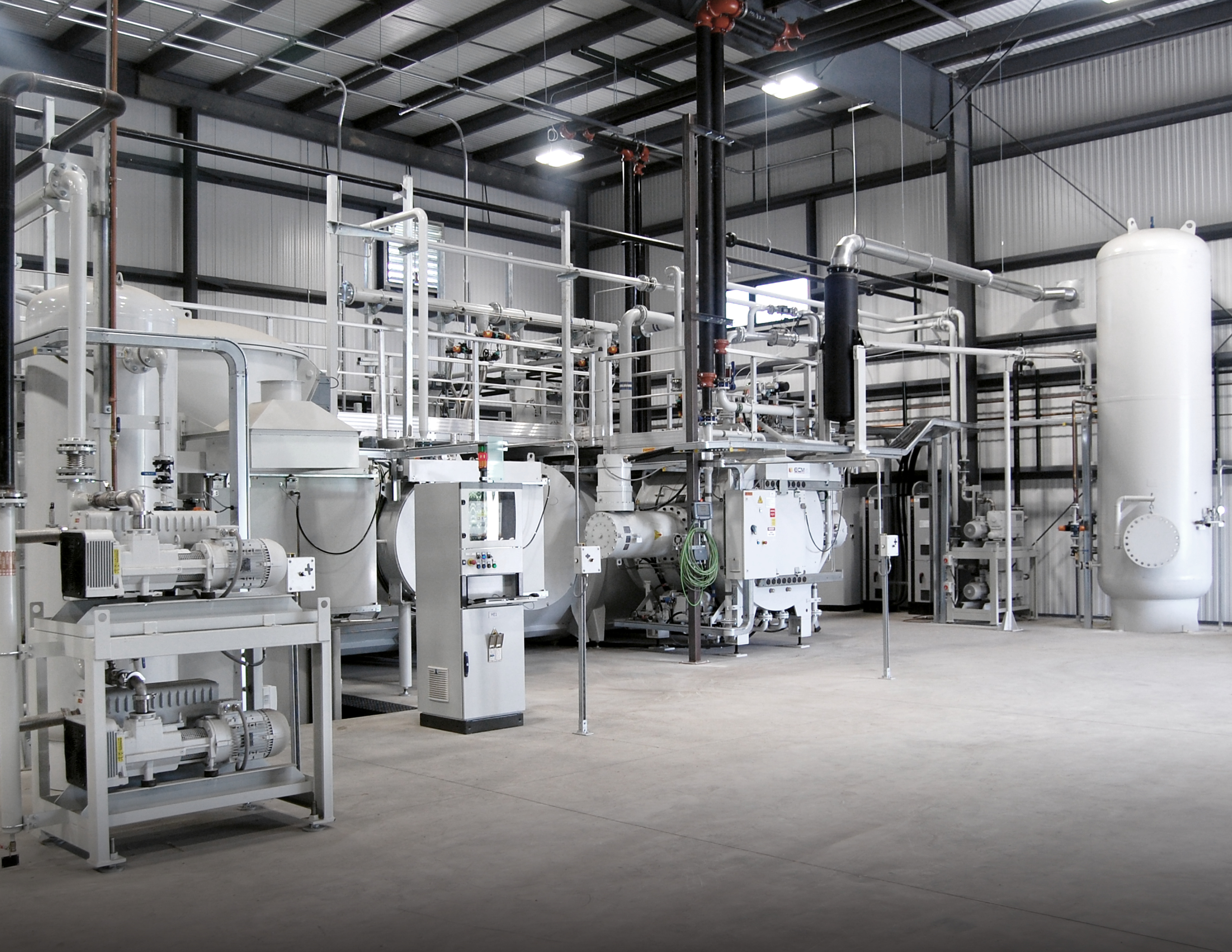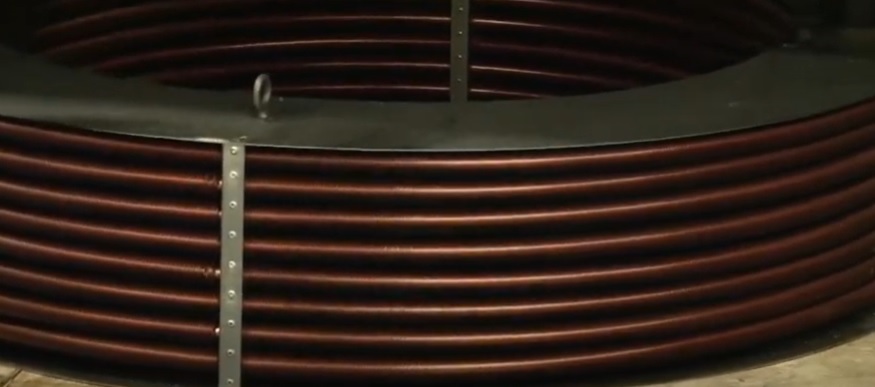LPC Carburizing: The Affordable Alternative to Gas Carburizing
Gas carburizing has been around for a long time. One could argue that gas carburizing is the most common heat treating process. Heat treaters performing gas carburizing are often characterized by a dirty environment, hazy surroundings, and that “smell.” While the product quality may be acceptable, gas carburized parts do come with some challenges, like excessive intergranular oxidation (IGO) or intergranular attack (IGA), which is often ground off.
Low-pressure carburizing (LPC) has proven to be a much cleaner and very capable alternative process. Most furnace companies have combined LPC with high pressure gas quenching, which moved carburizing from the dark back room to a relatively “clean room” environment. However, there is still a strong need for oil quenching, which is the common feature of the long used standard integral-quench (IQ) furnace.
As the world establishes strong environmental, social and governance (ESG) policies, electrically heated options with no endothermic gas emissions are really at the forefront of this trend. The heat treat community will need to adjust. In addition to less harmful emissions, an added benefit of LPC is that it offers a comfortable, cool, and clean workplace environment for employees.
The goal is to break the myth that LPC is only for aerospace or special applications, and that it is not affordable. Let’s dig a little deeper into gas atmosphere carburizing versus LPC.
History of LPC
It has been over 50 years since LPC was introduced yet, the technology is still considered “new” or different. “Carburizing” is done with a carbon-rich gas. Over the decades, it has been learned that acetylene gas is unique and readily available. Acetylene, unlike some other hydrocarbons (i.e., propane), does not break down with a combinationof low pressures and the high austenitic temperature ranges used (Ref. 1,3). Instead, it requires the presence of the metallic surface as a catalyst (Ref. 1). This is very convenient for LPC. In fact, the process has been shown to be so efficient early on, that carburizing speeds, initially, are extremely fast (Ref. 1). What does this mean? It means that LPC can be faster (and hence more economical and more productive) than atmospheric pressure gas carburizing.
It also means that with oil quenching (and LPC), productivity should exceed the older styles of carburizing equipment. By offering oil quenching, Nitrex HTS can build denser loads and still get acceptable quenching results with LPC. The available 20-bar nitrogen high pressure gas quench is also a nice option, for those whose parts can use it or those that desire less distortion.
Being in vacuum, LPC is quite a different process from the old-style atmospheric pressure gas carburizing process, which uses oxygen probes or analyzers to understand when the process reaches equilibrium (Ref. 1,3). There is no oxygen for reference (under vacuum) and carbon does not transport in and out of the steel in the same manner. Thus, it is not possible to reach an equilibrium situation in the presence of a carbon-rich atmosphere under vacuum. This works out great when doing vacuum hardening because carbon will not leave the steel during austenitizing (known as through hardening or neutral hardening) in the presence of a vacuum atmosphere. However, with LPC, the gases must contact the metal surfaces for elemental carbon to build up on the steel surface. This process means that LPC is, by necessity, a recipe or calculation-driven process (Ref. 1,3). Therefore, it is imperative to understand the reaction kinetics of the material surface, the carbon donor gas behavior, as well as the temperature and pressure profile.
The advances in LPC have been on many fronts over the last 50 years. Of course, controls and software have come a long way, but to be honest, LPC has not become mainstream. It is Nitrex’s belief that LPC has many benefits, and that this method of carburizing will be preferred, through expertise, understanding the equipment and pricing methods, and through using oil quenching and higher temperature processing.
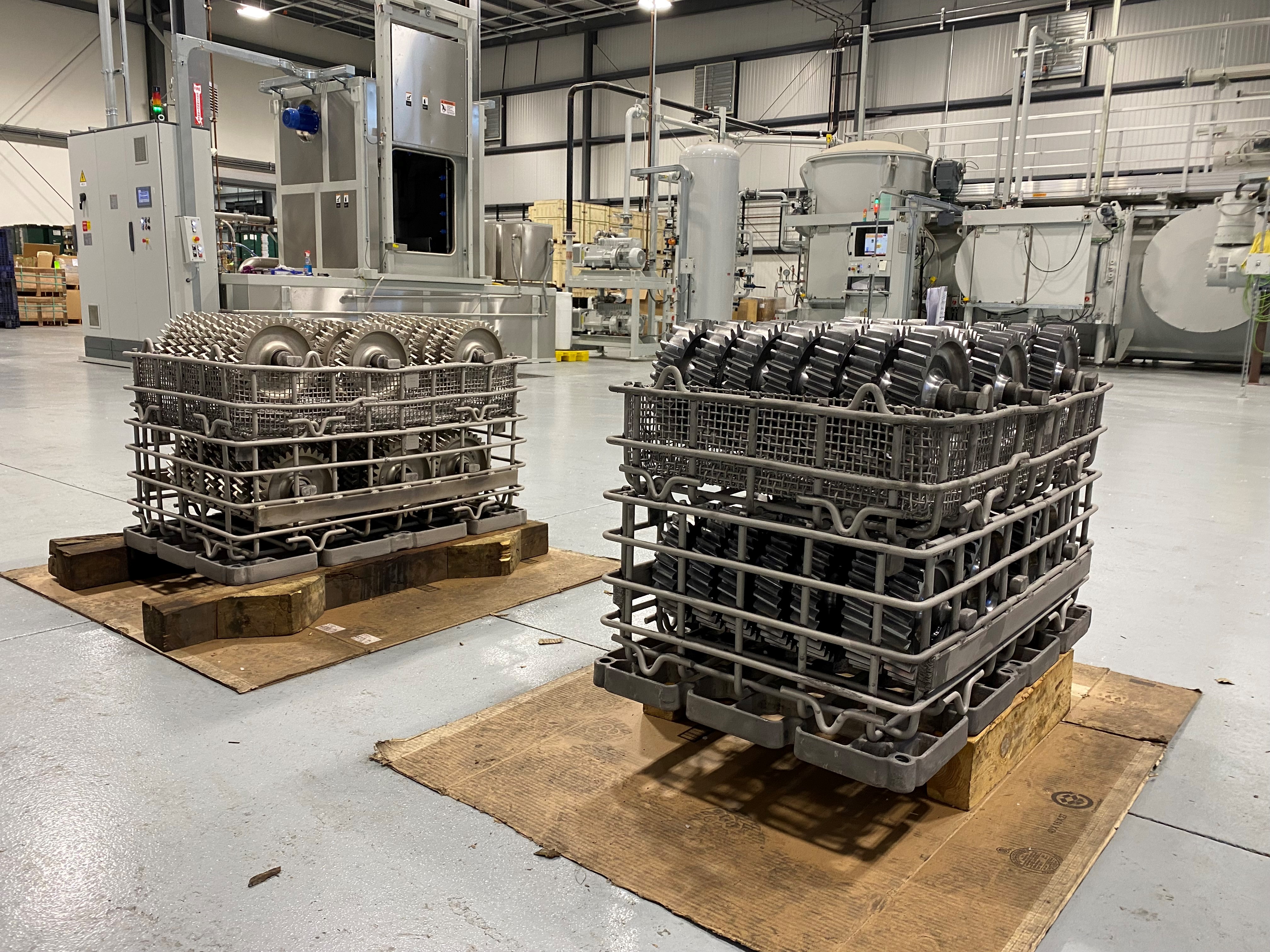 Large gears necessitate oil quench (all photos courtesy of Nitrex).
Large gears necessitate oil quench (all photos courtesy of Nitrex).
A Question of Affordability
It has long been known that initial stages of LPC result in faster carbon intake. But how fast? In a new and interesting research using “in situ synchrotron X-ray diffraction” analysis, the authors Tapar, Epp, et al. showed:
“The austenitic saturation limit is reached within seconds of the boost steps due to very fast carbon uptake rate from atmosphere into sample. Carbon atoms accumulate at the surface and carbides rapidly precipitate. Therefore, carbon diffusion from the atmosphere to the surface decelerated. After that point, which lasted about 20 seconds, the carburizing reaction changes from an atmosphere-dominated (process) to a material-dominated (process)” (Ref. 1).
What this means is that the recipe software must understand these mechanisms, especially to avoid wasting carbon gas and promoting sooting. As well, the furnace design engineer must understand that a very large amount of donor gas needs to be introduced very quickly and evenly into the load. Just as important with LPC is knowing the surface area of the parts being carburized.
The authors above further point out that additional boost steps result in slower diffusion as the material-dominated process takes over (diffusion into the steel), and even the accumulation (and catalytic reaction) of the surface changes in later boost and diffuse steps. Therefore, it is also important to incorporate temperature changes into the recipe process, as it is well known that diffusion is increased substantially at higher metal temperatures (Ref. 1 and 3).
For decades, it has been understood that recipes need to incorporate various “boost” and “diffusion” steps in the cycle. This means we “boost” in a lot of gas to the surface for a short period and then we let the carbon diffuse into the metal. But if you talk to any vacuum carburizing engineer, they all have different recipe creation opinions, and every manufacturer has a different software. Thus, anyone using LPC on a day-to-day basis needs to understand creating effective recipes. This is also the key to affordable LPC processing. Add in the need to really process at higher temperatures, and one can see that expertise is needed to run a well-functioning LPC shop.
With the way that they are designed, almost all vacuum furnaces work even better in higher temperatures. Unlike older gas atmosphere furnaces that employ “high temperature” exotic nickel or cobalt alloys for radiant tubes and fans, and for load support and transport, vacuum furnace designs mostly do not. Thus, higher process temperatures will not degrade the furnace life and will not increase maintenance costs nor add more downtime. Therefore, to process more affordably with LPC, it is desirable to increase the process temperature to speed things up. Much has been written about higher carburizing temperatures and how it is possible to cut cycle times in half (Ref. 4), so it will not be dwelled on here. Suffice it to say, higher temps really speed things up, shorten cycles and increase productivity.
In atmosphere furnaces, even with exotic, expensive metal alloys used in the hearth components and radiant heating tubes, the alloys will degrade with a relatively modest increase of 150°F, say from 1,700°F to 1,850°F. The figure on page 23 shows RA330 (a common heat treating alloy) and other alloy profiles at 1,700°F and 1,800°F. Creep rates increase and strength decreases substantially (as can be seen, at 1,800°F, most of the alloys are at very low strengths [the scale is logarithmic]).
And with many alloys, if you add in the harsh atmosphere of gas carburizing, problems get even worse. Any furnace designer must balance the need for long furnace life with competitive furnace pricing and maintenance cost challenges.
Therefore, by understanding the science of LPC, it is important to know that these systems are designed to run shorter cycles at higher temperatures, and by going from, for instance, 16 hours to 8 hours, one can double productivity (throughput) in a single chamber. Time is money. Less time means less costs to the customer and more profits for the CHT shop.
Atmosphere Carburizing Rather than LPC
The analysis of gas carburizing compared to LPC can get complicated and it is rather subjective. Some of the hard rules for using conventional gas atmosphere processing, when possible are:
- Carbonitriding
- Small lots
- Mixed loads of parts
- Low processing temperatures desired
For carbonitriding, ammonia is added to make the surface very hard, yet the needs are often for shallow cases. These are shorter cycles. Ammonia under vacuum is very unstable. This means it breaks down (dissociates) very fast. With LPC, in order to do a 30-minute carbonitriding segment, it may require just as much time to reduce the temperature. Also, the carburizing and ammonia segments are usually separated. Thus, carbonitriding is best left to the quick, easy, and inexpensive gas atmosphere method.
Small lots from a customer necessitate just as much initial set-up time as a constantly running program which can last for three or more years. It is much easier to drop these small lot loads into the daily grind of the gas atmosphere carburizing department than to set up and confirm a LPC cycle.
Moreover, many commercial shops may enjoy mixing parts to maximize load size, but with LPC, this gets more complicated, as mixed loads need the surface area to be calculated.
Finally, gas atmosphere carburizing works fine at lower temperatures and the equipment will last longer. LPC, especially for deeper case depths, really makes more sense at higher processing temperatures to speed the process along. Sometimes, the CHT shop will get a spec that limits processing temperature to 1,700°F or 1,750°F. It is then probably easier to use gas atmosphere carburizing. As mentioned, gas atmosphere furnace systems prefer lower temperatures since it is not as hard on the equipment. With LPC, one really wants to run at or above 1,800°F (990°C).
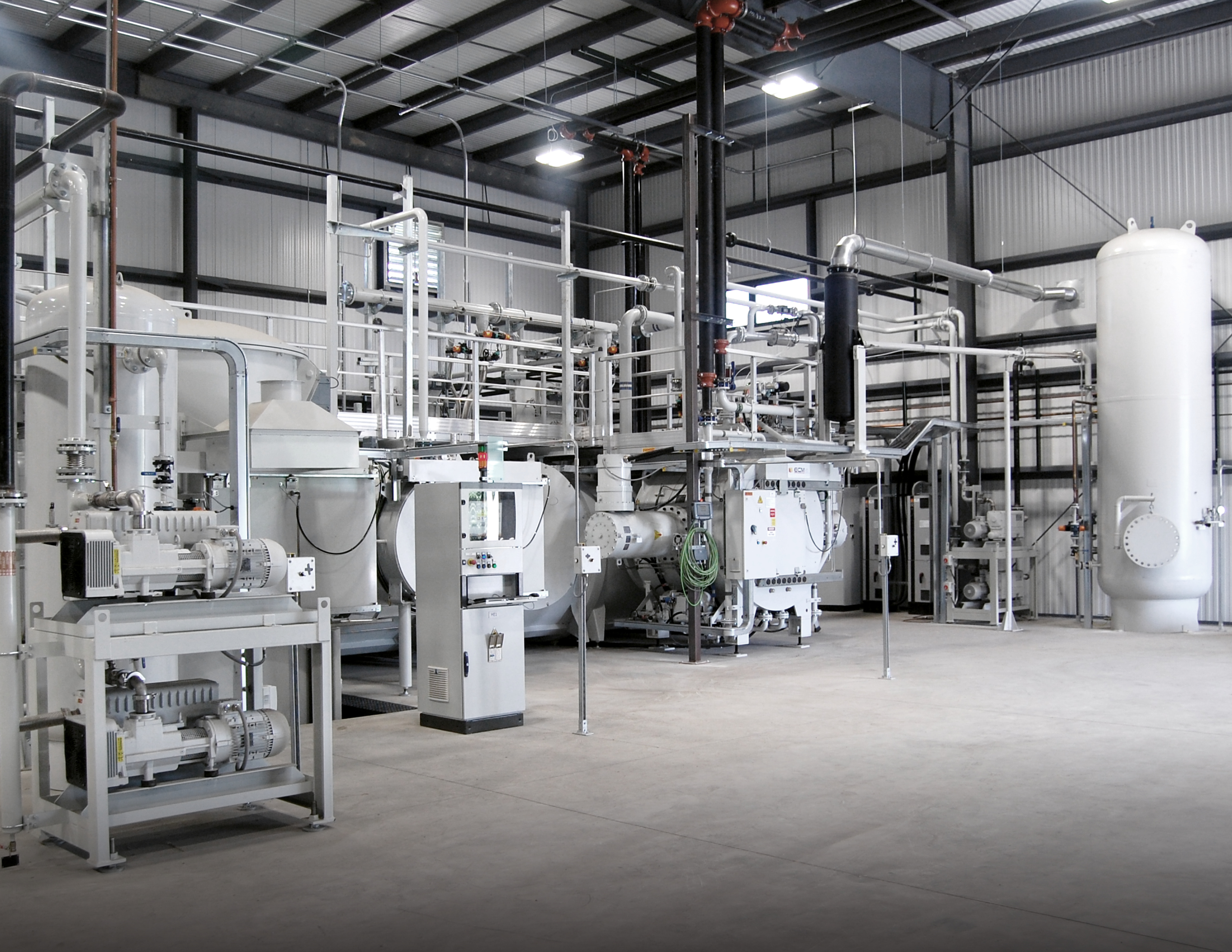 Modern high production low pressure carburizing furnaces at Nitrex HTS – Aurora, IL.
Modern high production low pressure carburizing furnaces at Nitrex HTS – Aurora, IL.
When to Use LPC
OK, so why is LPC both “better” and “affordable”?
- Mixing of gases is different in a vacuum than under atmospheric pressure. It is easier to deal with blind holes and difficult contours with LPC.
- Vacuum furnaces are designed to run at higher process temperatures as they do not use conventional alloys of construction.
- Vacuum is, by definition, cleaner.
- Oil quenching allows for more densely designed loads.
Mixing gases in vacuum? Yes, this is very important. Vacuum carburizing is performed in a pressure range of around 10 mbar (1,000 mbar is atmospheric pressure). When a gas is introduced into such a “vacuum”, the gas will behave in an ideal manner and expand to fill the space where there are no gas particles. In effect, this is mixing without the need for fans. This is because, during evacuation, there are less collisions of other gas particles as we evacuate more and more particles. This means blind holes will fill with gases by definition. The process is more complex, but this is a guiding principle. There is an excellent article on this concept (Ref. 7).
Most vacuum furnaces today are designed with water-cooled walls, and they use carbon and graphite insulating and heating element materials. These furnaces are easily designed for constant use at over 2,000°F. Most atmosphere furnaces struggle to not deteriorate at 1,750°F, as they use “high temperature” alloys, and the carbon gases and high temperatures attack and degrade these alloys. Few commercial shops will gas carburize at 1800°F and above, even though it is faster. As mentioned before, there are very few exotic nickel or cobalt alloys that perform well, long term, in a carburizing atmosphere and at temperatures of 1,850°F or above (Figure 1).
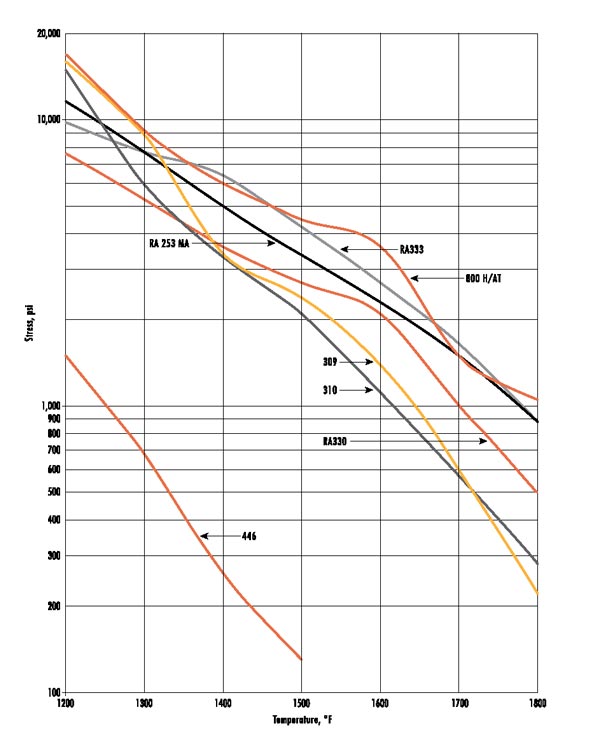 Figure 1 Minimum creep rate for various high temperature alloys, 0.0001 percent per hour, strength graph (Source: Rolled Alloys, Inc. Performance Guide).
Figure 1 Minimum creep rate for various high temperature alloys, 0.0001 percent per hour, strength graph (Source: Rolled Alloys, Inc. Performance Guide).
The whole process of vacuum heating and cooling is cleaner and devoid of oxygen. In conventional processes, oxygen (and water vapor) is everywhere, hence oxygen probes are used to measure carbon potential. These trace amounts of oxygen results in IGO/IGA and surface finish issues.
It seems most LPC furnaces historically were sold with high pressure nitrogen gas quenching (HPGQ). The problem here is that most steels that manufacturers want to carburize need oil quenching rates. When one complicates this with heavier parts, and load sizes need to be less dense with HPGQ to get uniform gas flows and quenching rates, it is easy to see why it was more expensive and has remained less popular.
There have been some detailed studies performed, and one such study was reported by Herring (Ref. 8).
Methods for Maximizing Value – Tooling Design
Because the equipment for LPC is expensive and furnace chamber sizes (and hence load sizes) are often not as large due to gas quenching limitations, users need to know some tricks to increase load sizes and, in turn, productivity.
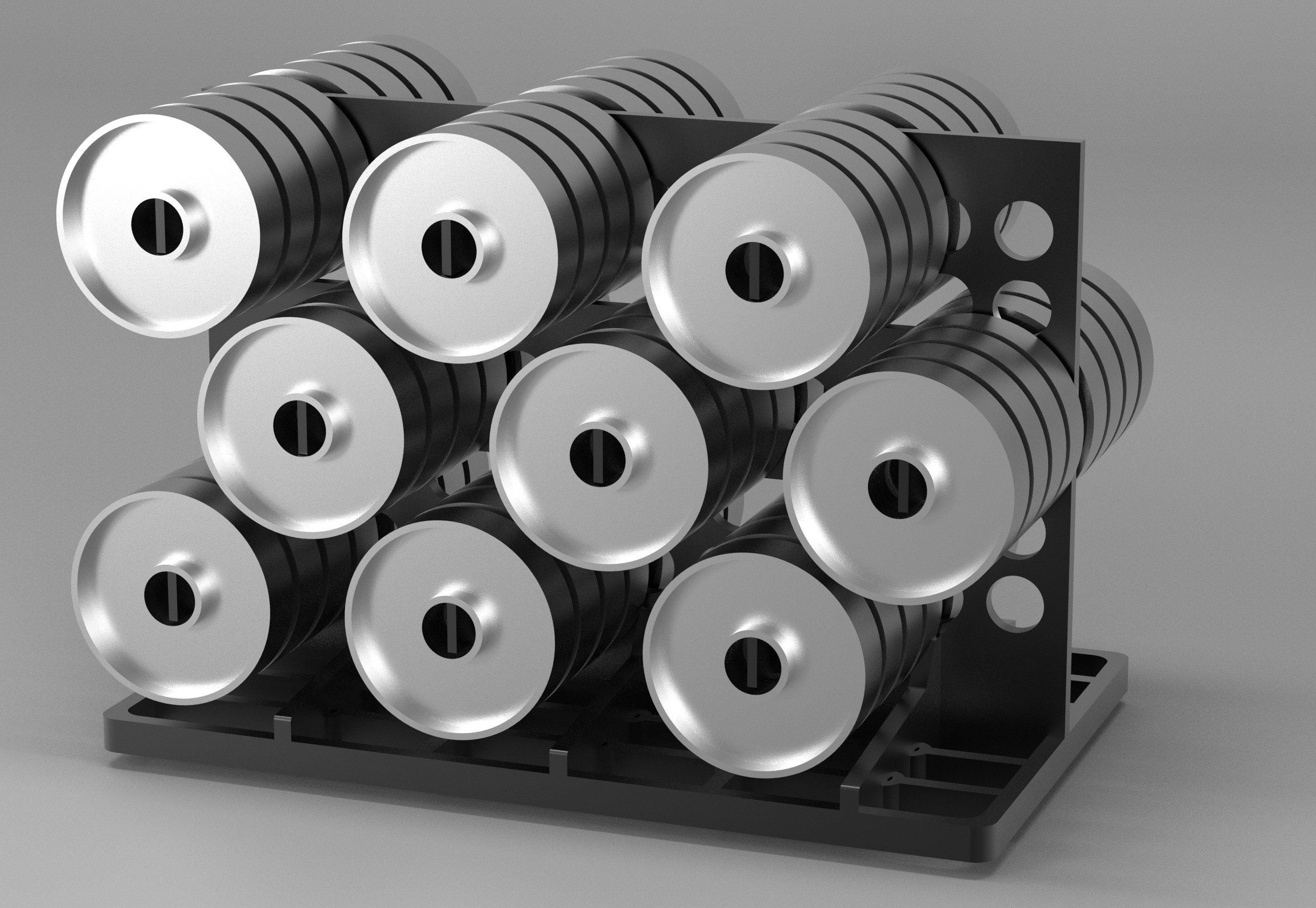 In order to maximize weights and use higher temperatures, rethinking load tooling is a requisite.
In order to maximize weights and use higher temperatures, rethinking load tooling is a requisite.
Fixtures for any furnace can get expensive and this fixture tooling is often bulky, heavy, and made from the same alloys that we have been discussing. As well, high temperature alloys that can survive a carburizing atmosphere and constant oil quenching stresses are not cheap! Constant oil quenching and high temperature carburizing are very destructive to alloys. Throw in the higher process temperatures desired with LPC, and we have problems. But the worst one is that we are using heavy alloys and reducing the ability to add parts to the load that can be processed and make money, due to the load weight limitations of any furnace.
As mentioned before, LPC has three loading limitations — surface area, separating parts properly, and weight. Alloys are heavy and, at high temperatures, tooling fixtures need to be built bulky and heavy. This reduces as much as one third of available load capacity.
CFC fixtures can be as much as 10 percent of the weight of alloy fixtures. So, in a 1,500 lb. maximum load, if alloy fixtures were 500 lb., then we could save over 400 lb. and use that extra load for money making parts instead (Ref. 5).
CFC, unlike alloys, retains its strength at higher temperatures, so it can be built without designing for temperature-related substantial reductions in strength, as with alloys. At these high use temperatures, alloys exponentially lose their strength. As well, CFC fixtures can easily handle process temperatures up to 2,000°F. The only limitation with CFC relates to contact points with metal parts at elevated temperatures (Ref. 5).
CFC is not as “robust” as alloys in the day-to-day rigors of running a heat treat operation. For this reason, combinations of CFC-alloy designs for fixtures also have been used. In Figure 4, we show a more robust cast tray made of a high temperature alloy, with the CFC fixture mounted on top. This uses the strengths of both designs and accepts some heavier weights as a trade-off to increase robustness, limit breakage and ease transferring loads at high temperatures. The article (Ref. 5) discusses CFC fixtures, oil quenching and tempering.
Future Considerations
Carburizing in a vacuum low pressure environment is not new. However, even today, the amount of carburizing performed by atmospheric gas carburizing far outweighs the use of LPC. Using LPC requires a commitment to the process and its benefits. Investing in LPC requires a faith that the furnaces can provide a return on investment, which is often much higher than for standard equipment.
References:
- Tapar, O., Epp, J., et al., “In -Situ Synchrotron X-ray Diffraction Investigation of Microstructural Evolutions During Low-Pressure Carburizing.” Metallurgical and Materials Transactions A, Volume 52A, April 2021, pgs. 1427-1442.
- Korecka, E., Korecki, M., et al., “Calculation of the Mixture Flow in a Low-Pressure Carburizing Process,” Metals 2019, 9-2019, p. 439.
- Herring, D., “A Case for Acetylene based Low Pressure Carburizing of Gears,” Thermal Processing, 9-2012, pgs. 40-45.
- Hemsath, M., Herring, D., “The Future of the Integral Quench Furnace,” ASM Heat Treat Conference Proceedings, 2019.
- Hemsath, M. “CFC Fixtures Increase Productivity in Carburizing, Nitriding, and FNC”, Gear Technology, March/April 2021.
- 6. Cronite Group, “CFC/Alloy Hybrid — The Next Generation Solution.” The Monty website (www.themonty.com), August 2020.
- Herring, D., “A Layman’s Guide to Understanding the Theory of Gases,” HeatTreatToday.com, Best of the Web, 2014 (original 2014).
- Herring, D., “Technology Evolution of the Integral-Quench Furnace,” Industrial Heating, January 2020.
